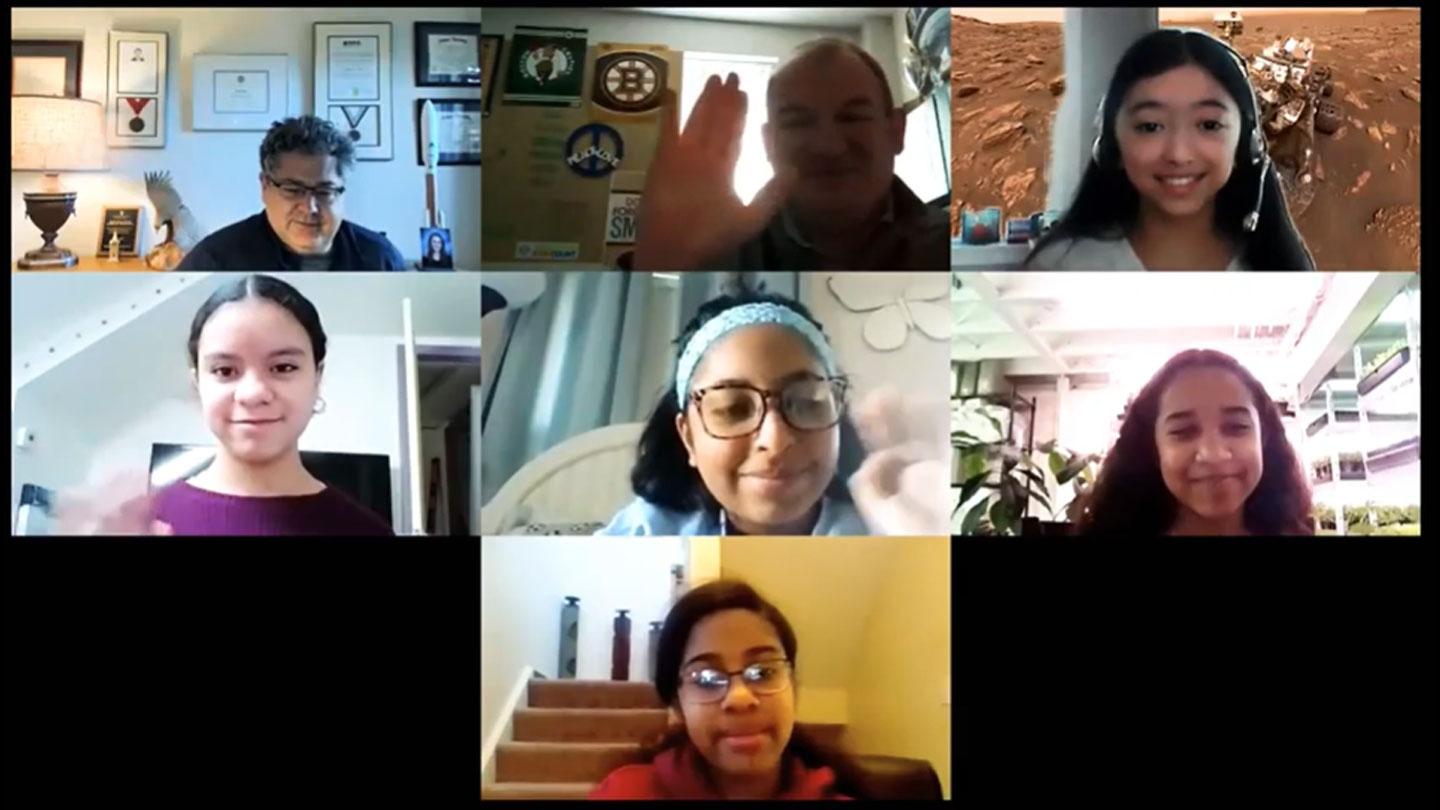Powering a Hydroponic Farm on Mars
KBR SVP Todd May Mentors Winning Team in National School Science Challenge
The idea of building a colony on Mars someday is no small feat, and many questions remain unanswered. For one, where would it be located? How would it be built? Can humans grow food and develop safe drinking water? Where do we even start?
A group of seventh graders, from Brockton, Massachusetts, set out to solve this dilemma with the help of Todd May, KBR’s senior vice president of Science & Space, and former director of NASA’s Space Flight Center in Huntsville, Alabama.
As part of the American Student Assistance® (ASA) Solve Together challenge, middle schoolers from around the country were asked to present solutions to real-world problems. Calling themselves the “Galactic Girls,” the group of best friends from Plouffe Academy chose the future colonization of Mars after a science lesson led them to be increasingly interested in what it would be like to live on the red planet.
The students spent extensive time researching innovative solutions that could prepare humans for life on Mars, to include tapping into the expertise of May, who has more than 28 years of experience.
During their discussion, May spoke about his journey from student to professional and offered advice to students interested in the STEM industry. Right off the bat, May told the girls to study what you love.
“Study hard, but also take time to have fun,” he said. “Don’t just try to make all A’s, make at least one B. Keep a good life balance – that’s when creativity strikes.”
Throughout the conversation, May also talked about the different projects he helped with at NASA and KBR, including space launch systems, which are designed to take humans to deep space – first to the lunar area and then Mars.
A national nonprofit focused on fostering students’ understanding of post-secondary education and career pathways, ASA recently announced the Galactic Girls won its inaugural contest, awarding their school $10,000 and the team $1,500.
“I am so proud of them,” May said. “The future of science and technology is bright thanks to young minds like theirs.”
At KBR, May leads approximately 4,000 employees worldwide for a part of the business that generates over $1 billion in annual revenue. His diverse team provides world-class research, engineering and technology development, information systems, and operations and mission solutions. KBR’s Space and Science business unit serves customers of national and strategic importance, such as NASA, DoD, NOAA, U.S. Geological Survey, Department of Transportation, and Defense Threat Reduction Agency (DTRA).
For the project, the girls took on the roles of scientist and botanist to figure out how to grow plant life on Mars as well as survive with limited water – an existing challenge for space professionals.
They set out to develop a hydroponic farm, a man-made plant production system versus natural light and soil. This idea stems from the fact that soil on Mars is not fit to grow human food. Specifically, the ground is mostly powdered iron oxide with small amounts of water. In addition, the atmosphere is 95 percent carbon dioxide with temperatures around -80 degrees Fahrenheit.
One key piece of knowledge the girls gained from their conversation with May centered around energy production. Originally, the students planned to use solar power for the hydroponics. While discussing the issue of dust storms on Mars, which impede solar panels, May mentioned NASA once had the same problem. Space professionals have since introduced a more reliable solution, which is currently used on the newest Mars rover, Perseverance.
Known as the Multi-Mission Radioisotope Thermoelectric Generator (RTG), this plutonium energy source creates dependable power while in unpredictable situations. RTGs work by converting heat from the natural decay of radiation into electricity, which is in abundance on Mars. Thanks to his mentoring, the girls chose to use RTG to power their farm and help recycle resources on the planet.
“Empowering these young girls was such a rewarding experience and I look forward to see what they will accomplish in the future,” May said. “One of my missions is getting young people, especially women, interested in engineering and celebrating this win was the perfect way to both increase and enhance their interest in the STEM career field.”
KBR is proud to congratulate the Galactic Girls on their extraordinary win and hopes others will heed their innovative spirit. “To students everywhere, keep up the inspiring work,” claimed May, and to all others, “be a mentor when you can. Our youth is our future.”




